Frequently Asked Questions
Where do I start?
If you're ready to start the process of making your building(s) smoke-free, you've come to the right place. Read all about how to create a smoke-free policy, from the initial stages of assessing your particular situation and engaging your stakeholders to drafting, implementing and enforcing your policy.
For more detailed information, download our comprehensive guidebook on smoke-free policies for rental properties or contact us to order a print copy.
How can I find out if tenants would support a smoke-free policy?
Assessing your current situation is the first step toward developing a smoke-free policy. Review the website sections: Step 1: Assessing your situation and Step 2: Engaging tenants, residents, staff and other relevant stakeholders to learn more about how to gauge support for a smoke-free policy in your building.
Does a smoke-free policy also include a ban on marijuana smoke and electronic cigarettes?
In our sample smoke-free policy for rental properties, you'll find the following sample definition:
Sample definition: ‘Smoke’ or ‘Smoking’ means to inhale, exhale, burn, or have control over a lighted cigarette, cigar, pipe, hookah pipe, or other lighted smoking implement designed to burn tobacco or any other weed or substance for the purpose of inhaling or tasting of its emissions.
This definition would not prohibit the use of electronic cigarettes as they do not involve burning or the emission of smoke. If you want your smoke-free policy to have a different scope, you may want to have a lawyer draft a definition that will suit your needs.
Marijuana and electronic cigarettes
Exposure to marijuana smoke can be a hot-button issue in multi-unit housing.
Regardless of whether marijuana is being smoked legally or illegally, the second-hand smoke emitted is still a health hazard and consideration for other residents is still important. A medical prescription to use marijuana does not give a person the right to smoke anywhere they choose. The user must abide by the rules of a smoke-free policy. By developing a smoke-free policy that is inclusive of products like marijuana, housing providers can eliminate any confusion on this issue.
Electronic smoking devices (ESDs; e.g., e-cigarettes or vaporizers) are relatively new and unregulated products in Canada. Currently, ESDs that contain nicotine are not permitted for use or sale by Health Canada and there is limited data on the health effects of their emissions, especially in the case of second-hand exposure. What is emitted from an ESD is not smoke and is currently understood to be significantly less harmful than tobacco smoke.
If you want to ban the use of ESDs on your property, you should consult with a lawyer to draft an effective policy and definition. Some ESDs may gain approval by Health Canada as regulated smoking-cessation devices in the future. Consider exempting any products that are government approved and regulated for use as cessation tools.
For more information on electronic smoking devices, please contact the Canadian Cancer Society or another health authority.
Does a smoke-free policy prohibit the ceremonial use of tobacco by indigenous peoples or other religious groups?
The ceremonial use of tobacco is not exempt from smoke-free policies in multi-unit housing unless explicitly stated. However, under human rights legislation all Albertans are under a duty to accommodate the religious beliefs and practices of others. The duty to accommodate goes both ways, as such any resident(s) using tobacco for ceremonial purposes should ensure they are not causing other residents undo harm.
Indigenous people have been using traditional or sacred tobacco for thousands of years. Traditional or sacred tobacco differs from commercial tobacco in that it is used in a variety of ways including ceremonial or sacred rituals for healing and purifying and in social customs where it is given or exchanged as a sign of respect. Traditional or sacred tobacco is grown and dried without additives. For more information on traditional tobacco please visit tobaccowise.com.
Tips for supporting the ceremonial use of tobacco include:
- Engaging the resident(s) to understand their ceremonial use of tobacco.
- Learning the duration and frequency of intended ceremonial tobacco use.
- Finding ways to accommodate ceremonial tobacco use that does not expose other residents to secondhand smoke exposure. For example, if possible recommend outdoor use and remove any barriers that might inhibit the ceremony from taking place outdoors.
- If the ceremonial use of tobacco is to be used indoors, establish a communication system to inform other residents about the ceremonial use of tobacco in order to avoid complaints and bridge any religious or cultural misunderstandings.
For more information on human rights legislation and the duty to accommodate, please see our full professional legal opinion.
Where can I find more information about smoke-free housing?
This website is full of information about smoke-free policies, including the benefits of a smoke-free environment and how to go about creating a policy for your building. There are also many tools and resources to help you throughout the process.
For more detailed information, download our comprehensive guidebook on smoke-free policies for rental properties or contact us to order a print copy.



